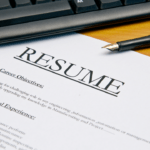
Shifting Workforce Dynamics in 2025
The 2025 labor market is undergoing a dramatic transformation, influenced by technological advancements, changing workforce expectations, and economic shifts. Employers face increasing pressure to attract and retain top talent while adapting to automation, sustainability, and evolving workplace structures.
With artificial intelligence reshaping job roles, remote work becoming the norm, and workers prioritizing flexibility and mental well-being, companies must rethink traditional hiring and workforce strategies. Those that embrace change and invest in employee development will gain a competitive advantage.
Hiring Practices in 2025
The demand for skilled professionals continues to exceed supply, pushing companies to adopt new hiring approaches. One major shift is the rise of skills-based hiring, where employers focus on competencies rather than traditional credentials.
95% of employers believe skills-based hiring is the future, increasing their ability to respond to labor market shifts.
Additionally, employer branding now plays a crucial role in attracting top candidates. Organizations that prioritize workplace flexibility, diversity, and employee well-being are seeing stronger engagement from job seekers.
Evolving Wages and Benefits
Legislative changes in 2025 are driving greater pay transparency, requiring businesses to disclose salary ranges in job postings. This shift promotes fair compensation and helps build trust with candidates.
Beyond base salaries, companies are redefining benefits to remain competitive. Expanded mental health support, student loan assistance, and flexible work arrangements are now standard offerings in many organizations.
AI in the Workplace: Automation and Ethical Considerations
Artificial intelligence is no longer a futuristic concept—it has firmly established itself as an integral part of the modern workplace. From streamlining administrative tasks to enhancing decision-making processes, AI is transforming how businesses operate. Companies are leveraging machine learning algorithms, natural language processing, and predictive analytics to boost efficiency, reduce costs, and drive innovation. However, as AI adoption accelerates, organizations must also grapple with ethical concerns, workforce displacement, and the need for human oversight in critical decision-making processes.

How AI is Reshaping Job Roles
AI-driven automation is redefining job functions across industries. In customer service, AI-powered chatbots handle routine inquiries, freeing up human agents to focus on complex problem-solving. In finance, predictive analytics assist with risk assessment and fraud detection, while in healthcare, machine learning algorithms analyze medical data to improve diagnostics and treatment plans. The impact of AI is not limited to high-tech sectors—manufacturing, retail, and even creative industries are undergoing transformation.
While automation eliminates repetitive tasks, it also creates new opportunities. Roles focused on AI system oversight, algorithm ethics, and human-AI collaboration are emerging. Data scientists, AI ethicists, and prompt engineers are becoming increasingly vital to businesses, ensuring that AI technologies are used responsibly and effectively.
AI and Workplace Productivity
One of AI’s biggest advantages is its ability to enhance productivity. Intelligent automation tools can process vast amounts of data in seconds, enabling faster decision-making. AI-powered virtual assistants, such as Microsoft Copilot and Google Bard, help employees draft emails, summarize meetings, and organize tasks, reducing administrative burdens.
Project management platforms now integrate AI to predict deadlines, optimize resource allocation, and identify potential bottlenecks before they cause delays. In creative fields, AI-assisted design tools generate visual content, draft marketing copy, and even compose music, allowing professionals to focus on refining rather than creating from scratch.
Ethical Challenges of AI in the Workplace
Despite AI’s numerous benefits, its integration into the workplace raises significant ethical concerns. Algorithmic bias remains a critical issue, as AI systems often inherit biases present in the data they are trained on. This can lead to discriminatory hiring decisions, unfair loan approvals, or biased law enforcement practices. To mitigate these risks, companies must implement rigorous auditing mechanisms and ensure diverse datasets are used in AI training.
Another challenge is transparency. Employees and consumers alike demand to know how AI-driven decisions are made. Black-box AI systems, which operate without clear explanations, create distrust and resistance. In response, businesses are adopting explainable AI (XAI) models, which provide insights into how decisions are reached.
AI and Job Security: The Automation Debate
The fear of AI replacing human jobs is widespread, with many workers concerned about job displacement. While some roles will inevitably become obsolete, experts argue that AI will create more jobs than it eliminates. However, the nature of these jobs will change, requiring employees to upskill and adapt.
Governments and businesses are responding by investing in workforce reskilling initiatives. Many companies now offer AI literacy programs, ensuring employees can work alongside AI rather than be replaced by it. Job redesign strategies are also gaining traction, where AI takes over repetitive tasks, allowing employees to focus on creativity, problem-solving, and strategic thinking.
Regulatory Landscape: How Governments Are Responding
As AI adoption grows, governments worldwide are introducing regulations to ensure ethical use. The European Union’s AI Act sets strict guidelines for high-risk AI applications, requiring transparency, fairness, and human oversight. The United States and other nations are also developing AI governance frameworks, emphasizing accountability and consumer protection.
Businesses must stay ahead of these regulations by implementing responsible AI policies. This includes regular AI audits, ethical training for employees, and clear guidelines on AI decision-making. Organizations that proactively address these issues will gain a competitive advantage and foster trust among stakeholders.
The Future of AI in the Workplace
Looking ahead, AI’s role in the workplace will continue to expand. Advancements in generative AI, deep learning, and robotics will further enhance automation capabilities. However, successful integration will depend on businesses balancing efficiency with ethical responsibility.
The key to AI’s future lies in collaboration—where humans and AI systems complement each other rather than compete. Organizations that prioritize human-AI synergy, ethical AI implementation, and workforce upskilling will be best positioned to thrive in the evolving job market.
Workplace Flexibility and Hybrid Models: The New Standard
Workplace flexibility has evolved from a temporary necessity into a defining feature of modern employment. The pandemic accelerated remote work adoption, but even as offices reopened, employees and businesses recognized the long-term benefits of flexible work arrangements. Hybrid models, where employees split time between remote and in-office work, have become the dominant structure, balancing autonomy with collaboration.
Organizations embracing workplace flexibility report higher productivity, improved employee satisfaction, and stronger retention rates. However, implementing hybrid models requires careful planning to ensure efficiency, inclusivity, and alignment with company culture.

The Shift in Employee Expectations
Employee priorities have shifted significantly in the past few years. Flexibility is no longer a perk—it's an expectation. A recent Gallup study found that 60% of remote-capable employees prefer hybrid work, while only 10% favor full-time office work. This shift is particularly pronounced among younger workers, with Gen Z and Millennials viewing workplace flexibility as a key factor in job satisfaction.
Organizations that resist flexible work risk losing talent to competitors who offer greater autonomy. In an era of low unemployment and high demand for specialized skills, businesses must adapt to remain competitive.
Productivity and Performance in Hybrid Work
One of the most debated aspects of hybrid work is its impact on productivity. Initial skepticism suggested remote employees would be less engaged, but studies have consistently shown the opposite. Research from Stanford University found that hybrid work arrangements reduce attrition by 35%, increase job satisfaction, and lead to a 13% productivity boost.
However, productivity gains depend on how hybrid models are structured. Companies that implement clear guidelines—such as defining which days employees should be in-office, setting expectations for availability, and ensuring equal access to resources—see the most success. Conversely, organizations that fail to establish structure may experience communication breakdowns and inefficiencies.
Challenges of Hybrid Work and How to Address Them
Despite its benefits, hybrid work presents several challenges, including:
- Unequal access to opportunities: Remote employees may feel sidelined compared to their in-office counterparts when it comes to promotions and high-visibility projects.
- Collaboration difficulties: Spontaneous brainstorming sessions and team bonding can be harder to facilitate in a hybrid setting.
- Technology gaps: Employees without access to reliable internet or appropriate workspaces may struggle to perform effectively.
To address these issues, companies are investing in digital collaboration tools, rethinking performance evaluation metrics, and ensuring remote employees have equal access to career advancement opportunities. Organizations must also foster inclusive cultures where remote and in-office employees are treated equitably.
Redesigning Office Spaces for Hybrid Work
Traditional office layouts, designed for daily in-person work, no longer fit the needs of a hybrid workforce. Businesses are reconfiguring office spaces to support collaboration, innovation, and flexibility. Key trends include:
- Hot desking: Employees no longer have assigned desks but instead use shared workspaces when they come into the office.
- Collaboration hubs: Offices prioritize open areas for team meetings and brainstorming rather than individual cubicles.
- Wellness-focused design: Many companies are incorporating natural lighting, ergonomic furniture, and quiet zones to improve employee well-being.
The goal is to make office spaces more dynamic and purpose-driven, ensuring employees see value in coming to the office rather than feeling obligated to do so.
The Future of Workplace Flexibility
Workplace flexibility will continue to evolve, driven by advancements in technology and changing employee expectations. Some companies are experimenting with four-day workweeks, asynchronous work schedules, and results-based performance evaluations instead of traditional time-tracking methods.
As organizations refine their hybrid models, the key to success will be adaptability. Businesses that listen to employee feedback, leverage data-driven insights, and remain open to new ways of working will thrive in this new era of workplace flexibility.
The Gig Economy and Freelancing: Reshaping the Workforce
The gig economy is no longer a niche segment of the labor market—it has become a dominant force that is reshaping how work is structured. Freelancing, once seen as an alternative to traditional employment, is now a primary career path for millions of professionals worldwide. Digital platforms, technological advancements, and changing workforce expectations have fueled this transformation, offering workers greater autonomy while challenging businesses to rethink workforce management strategies.
In 2024, an estimated 38% of the U.S. workforce engaged in freelance work, contributing $ 1.27 trillion to the economy. By 2032, the global gig economy is expected to reach $ 1.847 trillion, highlighting its growing influence across industries.

Why More Professionals Are Choosing Freelance Work
The traditional 9-to-5 model is losing its appeal, especially among younger generations. Many professionals are choosing freelancing for reasons such as:
- Greater flexibility: Freelancers control their schedules, choosing when, where, and how they work.
- Diverse income streams: Instead of relying on a single employer, gig workers can take on multiple clients, reducing financial risk.
- Skill-based opportunities: Platforms like Upwork, Fiverr, and Toptal allow professionals to monetize specialized skills, from graphic design to software development.
- Work-life balance: Many freelancers prioritize personal well-being over corporate structures, leading to higher job satisfaction.
A survey by MBO Partners found that 80% of freelancers have a positive outlook on their career trajectory, and 85% believe the best days of freelancing are still ahead.
How Companies Are Adapting to the Gig Economy
Businesses are increasingly integrating freelancers into their workforce strategies. With rapid technological advancements and shifting market demands, companies benefit from the gig economy in several ways:
- Access to specialized talent: Organizations can hire experts on a project-by-project basis without long-term commitments.
- Cost savings: Hiring freelancers eliminates expenses related to full-time benefits, office space, and onboarding.
- Agility and scalability: Businesses can quickly adjust their workforce size based on demand without the complexities of traditional hiring.
However, this shift presents challenges. Companies must ensure compliance with labor laws, maintain brand consistency across freelance contributions, and develop strategies to retain top gig workers.
Challenges Facing Freelancers in the Gig Economy
Despite its many advantages, freelancing comes with significant challenges, including:
- Income instability: Unlike salaried employees, freelancers face fluctuations in workload and payment timelines.
- Lack of benefits: Health insurance, retirement plans, and paid leave are typically unavailable to gig workers.
- Client acquisition: Building a steady client base requires strong networking and marketing skills.
To address these issues, many freelancers diversify their income streams, build strong personal brands, and leverage digital marketplaces to find consistent work.
The Future of the Gig Economy
The gig economy will continue to expand, driven by evolving workforce preferences and digital innovation. Governments and corporations are beginning to explore new policies, such as portable benefits and freelancer protections, to ensure fair treatment in this growing sector.
For professionals, freelancing offers unprecedented freedom and earning potential. For businesses, it provides access to a dynamic talent pool. As both sides navigate this evolving landscape, the gig economy is set to redefine the future of work.
Generational Workforce Shifts: Navigating a Multi-Generational Workplace
For the first time in history, five distinct generations coexist in the workforce, each bringing unique perspectives, expectations, and work styles. From Baby Boomers nearing retirement to Gen Z just entering the professional world, this diversity presents both opportunities and challenges for organizations striving to create cohesive, productive teams.
Understanding generational differences is critical for companies aiming to foster collaboration, innovation, and employee engagement. Leaders who successfully navigate these shifts can harness the strengths of each generation while minimizing potential conflicts.
Breaking Down the Generational Workforce
Each generation has been shaped by different social, economic, and technological influences, leading to distinct work preferences:
- Baby Boomers (Born 1946−1964): Value stability, in-person communication, and hierarchical leadership structures. Many remain in the workforce longer than expected due to increased life expectancy and financial necessity.
- Generation X (Born 1965−1980): The bridge between traditional and modern work models. Independent and adaptable, they appreciate work-life balance but are also highly experienced in corporate settings.
- Millennials (Born 1981−1996): Prioritize purpose-driven work, career development, and digital-first communication. They value workplace flexibility and are the driving force behind the rise of hybrid work models.
- Generation Z (Born 1997−2012): The first true digital natives, they seek inclusivity, mental health support, and fast-paced career growth. They are less likely to stay in one job long-term and prefer fluid career paths.
How Generational Differences Impact the Workplace
With such varied expectations, tensions can arise in several key areas:
- Communication Styles: While Boomers and Gen X prefer phone calls and face-to-face meetings, Millennials and Gen Z rely heavily on instant messaging and asynchronous collaboration tools.
- Workplace Technology: Older generations may take longer to adapt to new digital tools, while younger employees expect seamless, tech-driven workflows.
- Leadership Expectations: Traditional top-down management styles resonate with Boomers, whereas Millennials and Gen Z favor collaborative, feedback-driven leadership.
- Work-Life Balance: Younger generations prioritize flexibility, while older workers, having spent most of their careers in rigid structures, may view this differently.
Addressing these differences requires intentional leadership and inclusive policies that accommodate diverse needs while maintaining productivity.
Bridging the Generational Divide: Best Practices for Employers
Successful organizations recognize that generational diversity is a strength. Strategies to build an inclusive, multi-generational workplace include:
- Reverse Mentorship Programs: Pairing younger employees with senior staff to exchange digital skills, industry knowledge, and leadership insights.
- Flexible Work Models: Offering hybrid work options and alternative schedules to accommodate different preferences.
- Personalized Learning & Development: Providing tailored training programs that cater to various career stages, from early-career upskilling to leadership development.
- Customizing Benefits & Perks: Addressing different needs, such as retirement planning for Boomers and student loan assistance for Gen Z.
The Future of a Multi-Generational Workforce
As younger generations continue to dominate the workforce and older employees delay retirement, businesses must evolve to meet shifting expectations. The most successful companies will be those that embrace generational diversity, foster adaptability, and create inclusive environments where employees of all ages can thrive.
By leveraging the strengths of each generation, organizations can drive innovation, enhance employee engagement, and build resilient, future-ready teams.
Upskilling and Reskilling Initiatives: Preparing the Workforce for the Future
With the rapid evolution of technology and shifting job market demands, continuous learning is no longer optional—it's essential. Upskilling and reskilling initiatives have become critical strategies for both employees and employers aiming to stay competitive in an era of automation, artificial intelligence, and industry disruption.
According to the World Economic Forum, nearly half (44%) of the core skills required for jobs will change in the next five years. This means that organizations must proactively invest in workforce development to bridge skill gaps and future-proof their teams.

Understanding Upskilling vs. Reskilling
Though often used interchangeably, upskilling and reskilling serve distinct purposes:
- Upskilling: Enhancing employees' existing skills to help them stay relevant in their current roles. This is particularly important in fields where technological advancements continuously reshape job requirements.
- Reskilling: Training employees in entirely new skill sets to transition into different roles, often within the same company. This is a key strategy for organizations navigating workforce realignment due to automation and evolving industry demands.
Why Upskilling and Reskilling Matter
The benefits of investing in workforce development extend beyond individual career growth. Companies that prioritize upskilling and reskilling enjoy improved employee retention, increased productivity, and a stronger talent pipeline.
A LinkedIn Learning report found that 94% of employees would stay longer at a company that invests in their career development.
Additionally, as automation and AI replace repetitive tasks, companies that fail to equip their workforce with new skills risk falling behind in innovation and efficiency.
Key Areas of Focus in Upskilling and Reskilling
Modern workforce development initiatives focus on a combination of technical and soft skills:
- Digital Literacy: Training employees to navigate cloud computing, cybersecurity, data analytics, and AI applications.
- Strategic Thinking & Problem-Solving: Developing analytical skills to enhance decision-making in complex work environments.
- Communication & Leadership: Equipping employees with the ability to lead cross-functional teams and manage remote or hybrid workforces.
- Adaptability & Innovation: Encouraging a growth mindset to embrace change and drive continuous improvement.
How Companies Are Implementing Upskilling and Reskilling Programs
Forward-thinking organizations are integrating learning and development into their corporate strategy. Some of the most effective approaches include:
- Online Learning Platforms: Providing employees with access to self-paced courses on platforms like Coursera, Udemy, and LinkedIn Learning.
- Internal Training Programs: Creating company-specific training initiatives that align with industry trends and organizational needs.
- Mentorship and Coaching: Encouraging knowledge-sharing between experienced employees and newer hires.
- Partnerships with Educational Institutions: Collaborating with universities and training centers to offer certifications and degree programs.
- Job Rotation & Cross-Training: Allowing employees to gain experience in different departments to build versatile skill sets.
Overcoming Challenges in Workforce Development
Despite its advantages, implementing large-scale upskilling and reskilling initiatives comes with challenges. Some common hurdles include:
- Resistance to Change: Employees may be hesitant to embrace new learning opportunities, particularly if they fear job displacement.
- Time Constraints: Finding time for training amid daily responsibilities can be difficult.
- Measuring ROI: Companies must develop clear metrics to evaluate the effectiveness of their programs.
To address these challenges, organizations should create a culture of continuous learning, offer incentives for skill development, and integrate training seamlessly into employees' workflows.
The Future of Learning in the Workplace
As industries continue to evolve, lifelong learning will become the foundation of career success. Companies that foster a proactive approach to skill development will not only retain top talent but also position themselves as leaders in an increasingly competitive job market.
With AI, automation, and digital transformation reshaping nearly every industry, upskilling and reskilling are no longer optional—they are essential strategies for workforce sustainability and business growth.
Mental Health and Workplace Well-being: Prioritizing Employee Wellness
As workplace dynamics continue to evolve, mental health and overall well-being have become central concerns for organizations worldwide. Stress, burnout, and work-related anxiety are no longer dismissed as personal challenges but are now recognized as critical factors affecting productivity, engagement, and job satisfaction.
According to the World Health Organization (WHO), depression and anxiety cost the global economy an estimated $ 1 trillion annually due to lost productivity. As a result, companies are increasingly investing in mental health initiatives to create healthier, more sustainable work environments.

The Growing Importance of Mental Health in the Workplace
The conversation around mental health at work has shifted dramatically in recent years. Previously, employees were often expected to compartmentalize their personal struggles, but now organizations acknowledge that mental well-being directly impacts performance. Key factors influencing workplace mental health include:
- Workload and Job Demands: Excessive workloads, unrealistic deadlines, and high-pressure environments contribute to stress and burnout.
- Work-Life Balance: The rise of remote and hybrid work models has blurred the boundaries between professional and personal life, making it harder for employees to disconnect.
- Company Culture: A toxic work culture, lack of recognition, or poor leadership can exacerbate mental health challenges.
- Job Security and Career Growth: Concerns about job stability, promotions, and financial security can lead to chronic anxiety.
Recognizing and Addressing Workplace Burnout
Burnout, characterized by chronic stress, exhaustion, and reduced effectiveness, has become a widespread issue. The WHO officially recognized burnout as an occupational phenomenon, emphasizing the need for organizations to take preventive measures.
Common signs of burnout include:
- Persistent fatigue and lack of energy
- Decreased motivation and job satisfaction
- Increased irritability and frustration
- Difficulty concentrating and making decisions
- Physical symptoms such as headaches or sleep disturbances
To combat burnout, companies must foster a supportive work environment that prioritizes rest, encourages regular breaks, and promotes realistic expectations for employee performance.
Strategies for Promoting Mental Health at Work
Organizations that invest in mental health initiatives not only enhance employee well-being but also benefit from increased retention, higher engagement, and improved overall productivity. Effective strategies include:
- Flexible Work Arrangements: Allowing employees to work remotely, offering flexible hours, and supporting a better work-life balance.
- Mental Health Days: Encouraging employees to take time off to focus on their well-being without stigma or fear of repercussions.
- Employee Assistance Programs (EAPs): Providing access to professional counseling services, stress management programs, and wellness resources.
- Open Communication: Creating a culture where employees feel comfortable discussing mental health concerns without fear of judgment.
- Wellness Programs: Implementing initiatives such as mindfulness sessions, meditation workshops, and fitness challenges.
- Training for Managers: Educating leaders on how to identify signs of stress and offer support to struggling team members.
The Role of Leadership in Workplace Well-being
Leadership plays a crucial role in shaping an organization’s approach to mental health. When executives and managers openly discuss their own well-being, they help reduce stigma and set a positive example. Leaders should:
- Encourage an open dialogue about mental health without judgment.
- Regularly check in with employees to assess their workload and stress levels.
- Recognize and reward employee contributions to boost morale.
- Provide clear career growth paths to reduce job-related uncertainty.
Technology’s Impact on Mental Health
While technology has increased efficiency and connectivity, it has also introduced new challenges for mental health. The expectation of being «always on,» constant notifications, and digital fatigue contribute to stress and burnout.
Organizations can mitigate these effects by:
- Setting clear boundaries for after-hours communication.
- Encouraging employees to disconnect from work-related emails and messages during personal time.
- Using wellness apps to support mental health, such as meditation and relaxation tools.
The Future of Mental Health in the Workplace
As workplace mental health continues to gain attention, companies will need to integrate well-being initiatives into their core business strategies. Future trends may include:
- AI-driven mental health support: The use of AI-powered chatbots and virtual counseling services.
- More comprehensive benefits packages: Covering therapy, wellness programs, and stress management courses.
- Proactive mental health policies: Implementing guidelines that prioritize mental well-being in performance evaluations and company culture.
Ultimately, fostering a workplace where employees feel valued, supported, and empowered to prioritize their mental health will lead to stronger teams and more resilient organizations.
Green Jobs and Sustainability: The Future of Work in a Changing World
As climate change and environmental concerns take center stage, the job market is shifting towards sustainability-focused careers. Green jobs, which contribute to environmental preservation and sustainable resource management, are becoming increasingly important in industries ranging from energy and construction to finance and technology. Governments, businesses, and individuals are recognizing that a sustainable future requires not only innovation but also a workforce equipped to support the green economy.
According to the International Labour Organization (ILO), the transition to a greener economy could create up to 24 million jobs worldwide by 2030. This shift presents both opportunities and challenges, as industries must adapt to new technologies, regulatory changes, and consumer expectations.

What Are Green Jobs?
Green jobs are roles that directly contribute to reducing environmental impact, promoting sustainability, and conserving natural resources. These jobs span multiple industries and can include positions such as:
- Renewable Energy Specialists: Engineers, technicians, and analysts working with solar, wind, hydro, and geothermal energy.
- Environmental Scientists: Researchers assessing pollution levels, climate risks, and conservation strategies.
- Sustainable Agriculture Experts: Professionals promoting organic farming, soil conservation, and sustainable food production.
- Eco-Friendly Construction Workers: Architects, engineers, and builders designing energy-efficient and low-carbon buildings.
- Green Finance Analysts: Financial experts investing in sustainable projects and advising companies on reducing their carbon footprint.
- Waste Management and Recycling Coordinators: Specialists developing circular economy solutions to minimize waste.
The growing emphasis on sustainability means that even traditional careers—such as marketing, supply chain management, and corporate leadership—are evolving to include environmental considerations.
The Rise of Renewable Energy Jobs
One of the fastest-growing sectors within the green job market is renewable energy. As fossil fuels decline and global initiatives push for net-zero carbon emissions, demand for renewable energy professionals is skyrocketing.
Key trends in renewable energy employment include:
- Solar Energy Expansion: Solar panel installation and maintenance are among the most rapidly growing job categories.
- Wind Power Development: The wind energy sector requires engineers, turbine technicians, and offshore wind farm specialists.
- Energy Storage Innovations: Advances in battery technology and smart grids are creating new job opportunities.
- Hydrogen and Bioenergy: Emerging fields like green hydrogen and biofuels are gaining traction.
Countries investing heavily in clean energy—such as the U.S., China, and members of the European Union—are leading the way in job creation in this sector.
Corporate Sustainability and ESG Careers
Beyond energy and environmental sciences, the corporate world is also embracing sustainability through Environmental, Social, and Governance (ESG) initiatives. Companies are hiring sustainability officers, ESG analysts, and green compliance specialists to ensure their operations align with environmental regulations and ethical business practices.
These roles involve:
- Developing and implementing corporate sustainability strategies.
- Measuring and reporting carbon emissions and energy use.
- Ensuring compliance with international sustainability standards.
- Driving corporate responsibility initiatives related to waste reduction and ethical sourcing.
As consumers become more eco-conscious, businesses are realizing that sustainability is not just a trend—it's a long-term strategy for competitiveness and brand loyalty.
Skills and Education for the Green Workforce
The shift to a sustainable economy requires workers to develop new skills and adapt to evolving industry standards. Educational institutions and vocational training centers are expanding programs focused on green careers, with courses in:
- Environmental science and climate studies
- Renewable energy engineering
- Green business management
- Sustainable urban planning
- Environmental law and policy
Additionally, upskilling and reskilling initiatives are helping workers transition from carbon-intensive industries—such as coal mining and oil extraction—to green jobs in renewable energy and sustainability sectors.
Government Policies and the Green Economy
Public policy plays a crucial role in driving the green job market. Governments worldwide are introducing regulations, incentives, and investment programs to support sustainability efforts.
Some of the most impactful policies include:
- Green New Deals: Ambitious legislative frameworks promoting clean energy, job creation, and carbon neutrality.
- Tax Incentives: Financial benefits for businesses investing in renewable energy and sustainable practices.
- Carbon Pricing Mechanisms: Policies such as carbon taxes and cap-and-trade programs encouraging emission reductions.
- Infrastructure Investments: Funding for green public transportation, smart cities, and eco-friendly construction.
These measures not only reduce environmental impact but also stimulate job growth in sustainability sectors.
The Future of Green Jobs
As climate goals become more ambitious, the demand for green jobs will continue to rise. Future developments in the field may include:
- AI and Automation in Sustainability: Artificial intelligence optimizing energy use and resource management.
- Advanced Circular Economy Models: New recycling and reuse technologies reducing waste.
- Sustainable Space Exploration: Eco-friendly materials and clean energy solutions in space missions.
- Personal Carbon Tracking: Technology enabling individuals to monitor and reduce their carbon footprint.
The green job revolution is reshaping the global workforce, offering opportunities for professionals in nearly every sector to contribute to a more sustainable future. Whether through renewable energy, corporate sustainability, or environmental research, careers in sustainability are not only good for the planet but also for long-term economic growth and job security.
How Employers Can Stay Ahead in a Rapidly Changing Workforce
In a world where technology, workforce expectations, and global challenges are reshaping industries, employers must be proactive to remain competitive. Companies that fail to adapt risk losing top talent, falling behind in innovation, and struggling with outdated business models. To stay ahead, organizations must embrace change, foster agility, and prioritize employee growth and well-being.
Embracing Technological Innovation
Technology is at the forefront of workplace transformation. From artificial intelligence to automation, companies that leverage cutting-edge tools gain efficiency, improve decision-making, and enhance employee productivity.

Employers should focus on:
- AI and Automation: Using AI-driven analytics for smarter hiring, workflow automation to boost efficiency, and AI-powered customer service for better engagement.
- Cloud and Remote Collaboration: Investing in cloud-based tools to support hybrid work models and global teams.
- Cybersecurity Measures: Protecting company and employee data in an increasingly digital world.
By integrating these technologies, businesses can streamline operations, minimize redundancies, and focus on high-value tasks.
Creating a Culture of Continuous Learning
With industries evolving at breakneck speed, lifelong learning is no longer optional—it's essential. Companies that prioritize upskilling and reskilling programs ensure their workforce remains competitive.
Strategies include:
- Internal Training Programs: Offering in-house workshops and certifications to help employees expand their skills.
- Partnerships with Educational Institutions: Collaborating with universities and online platforms to provide tailored learning experiences.
- Encouraging Self-Directed Learning: Providing resources such as e-learning subscriptions, mentorship programs, and project-based skill development.
Investing in learning opportunities not only enhances employee performance but also boosts retention and job satisfaction.
Prioritizing Employee Well-Being and Mental Health
Today’s workforce expects more than just a paycheck. Employees seek workplaces that support their well-being, offer flexibility, and promote work-life balance.
Employers can achieve this by:
- Implementing Flexible Work Policies: Supporting remote work, hybrid schedules, and flexible hours.
- Providing Mental Health Resources: Offering counseling services, wellness programs, and stress management workshops.
- Fostering an Inclusive Work Environment: Encouraging open dialogue, diversity initiatives, and employee resource groups.
By prioritizing well-being, companies reduce burnout, improve morale, and enhance overall productivity.
Building a Sustainable Business Model
Sustainability is no longer a corporate buzzword—it's a business imperative. Consumers, investors, and employees are increasingly drawn to companies with strong environmental, social, and governance (ESG) commitments.
To integrate sustainability, businesses should:
- Adopt Green Practices: Implement energy-efficient operations, reduce waste, and invest in renewable energy.
- Support Ethical Supply Chains: Partner with vendors that prioritize fair labor and sustainable sourcing.
- Set Measurable ESG Goals: Establish clear sustainability targets and regularly report progress.
Companies that embrace sustainability not only contribute to a better world but also strengthen their brand reputation and financial performance.
Redefining Leadership for the Future
The role of leadership is shifting. Traditional top-down management is giving way to a more collaborative and empathetic approach.
Effective leaders of the future must:
- Practice Adaptive Leadership: Responding to change with agility and resilience.
- Encourage Innovation: Creating an environment where employees feel empowered to share ideas and experiment.
- Lead with Emotional Intelligence: Understanding and addressing employee concerns with empathy.
Strong leadership will be the key differentiator between companies that thrive and those that struggle in an evolving business landscape.
Final Thoughts
Staying ahead in today’s workforce means embracing change, investing in people, and adapting to emerging trends. Employers who prioritize technology, continuous learning, employee well-being, sustainability, and modern leadership will not only survive but thrive in the future of work.









